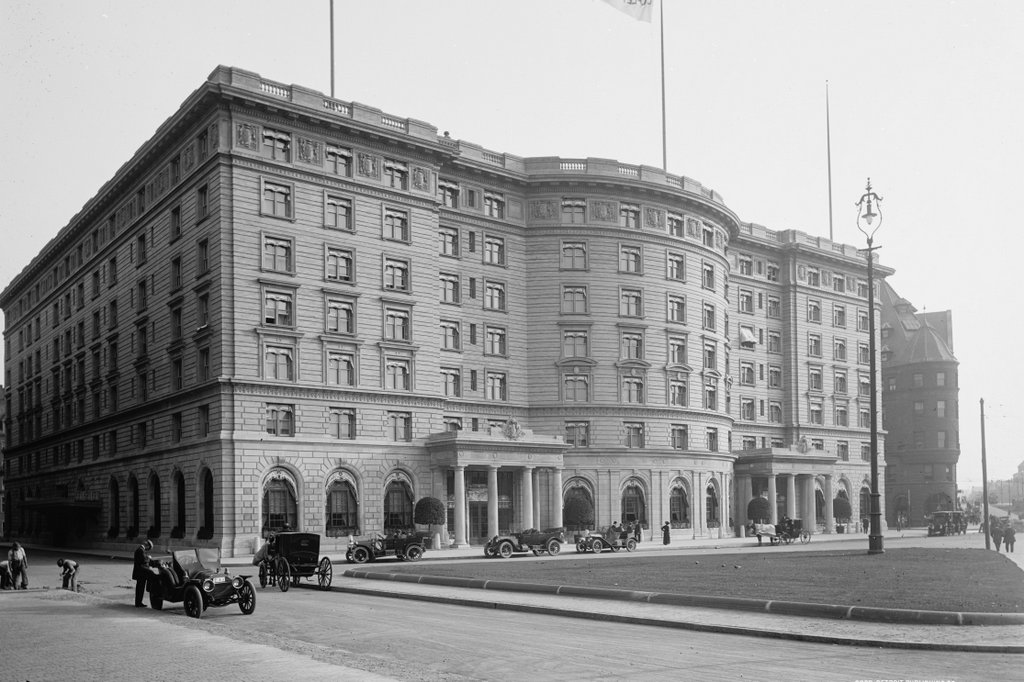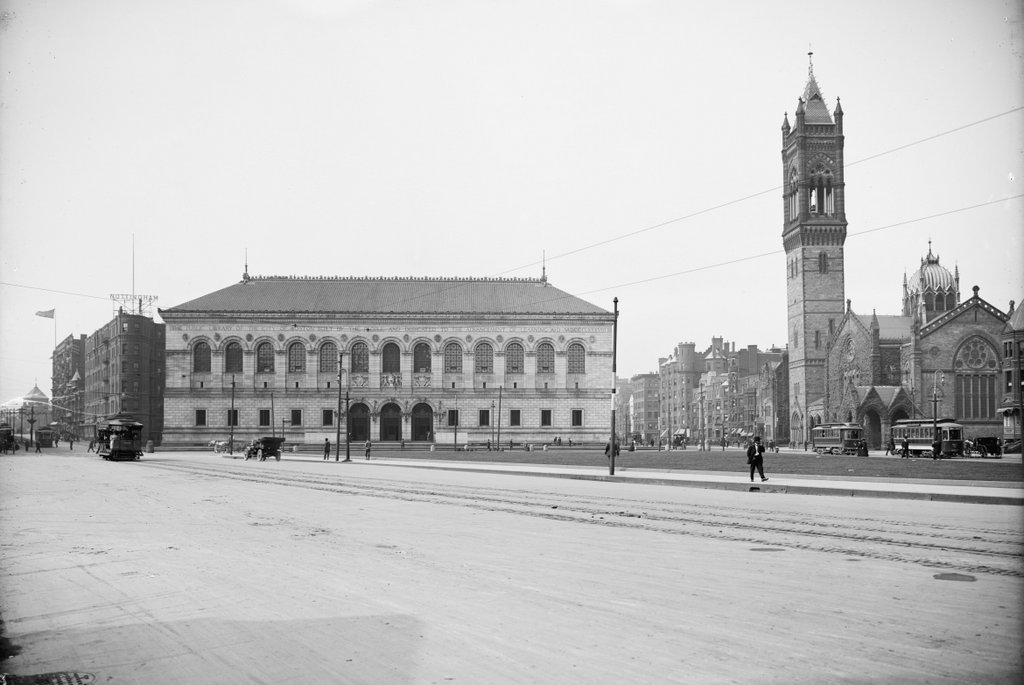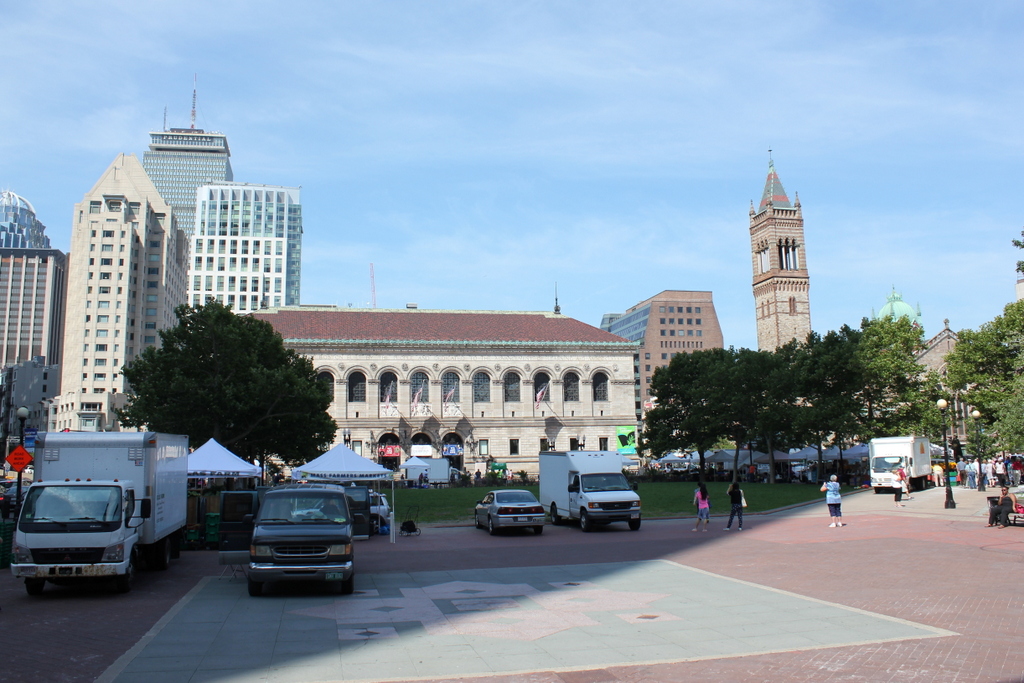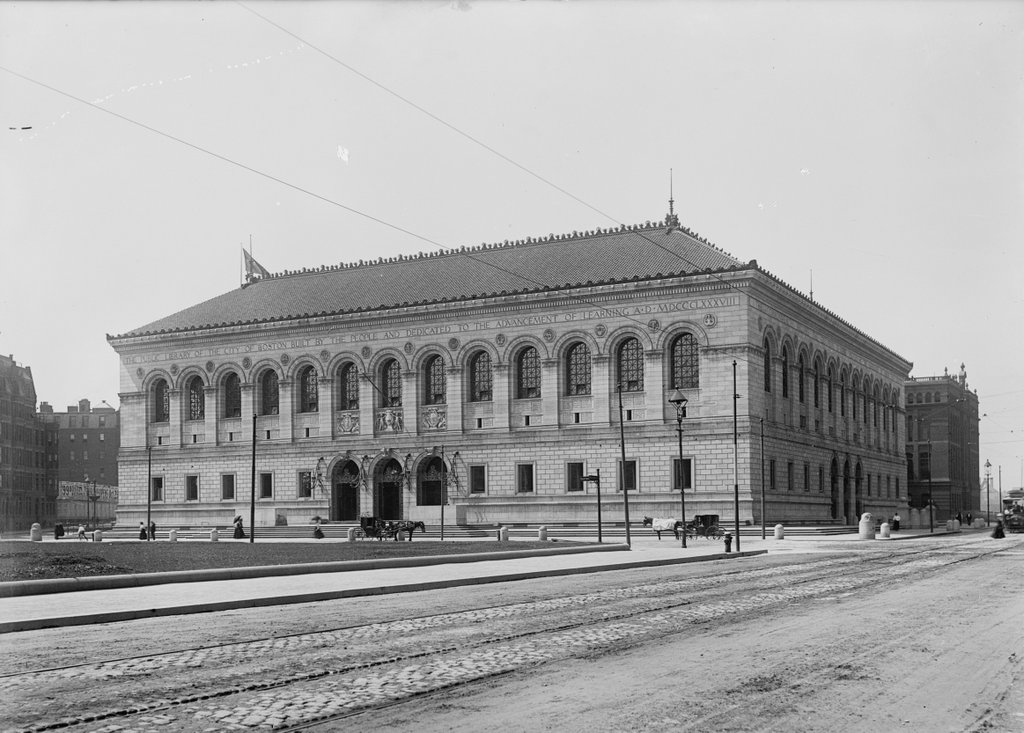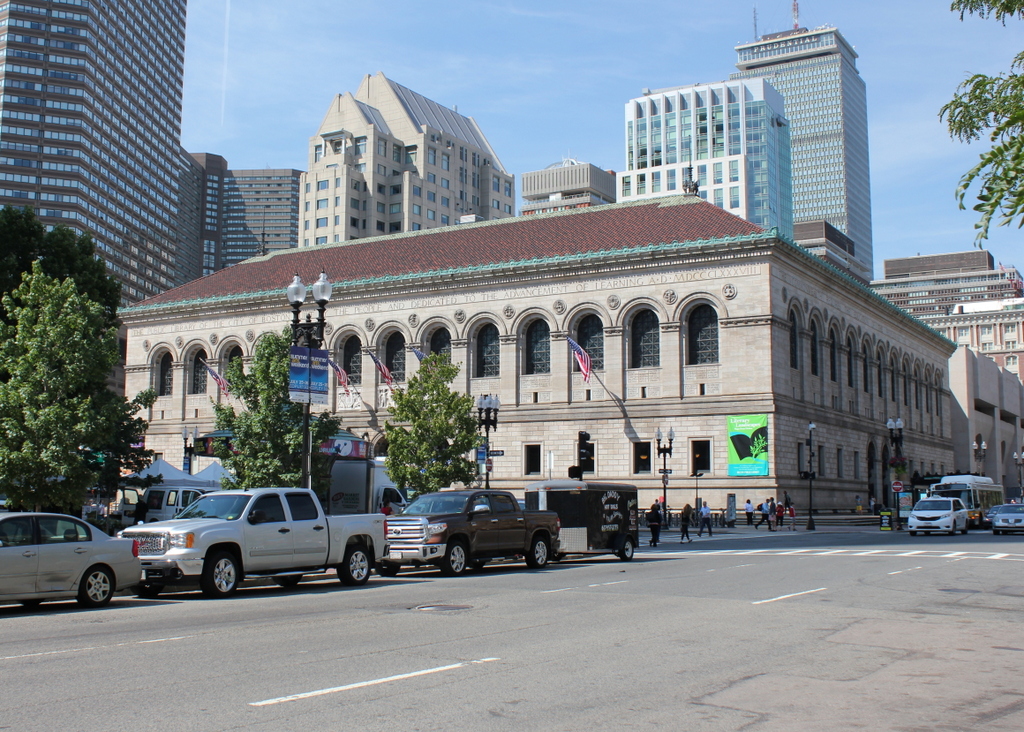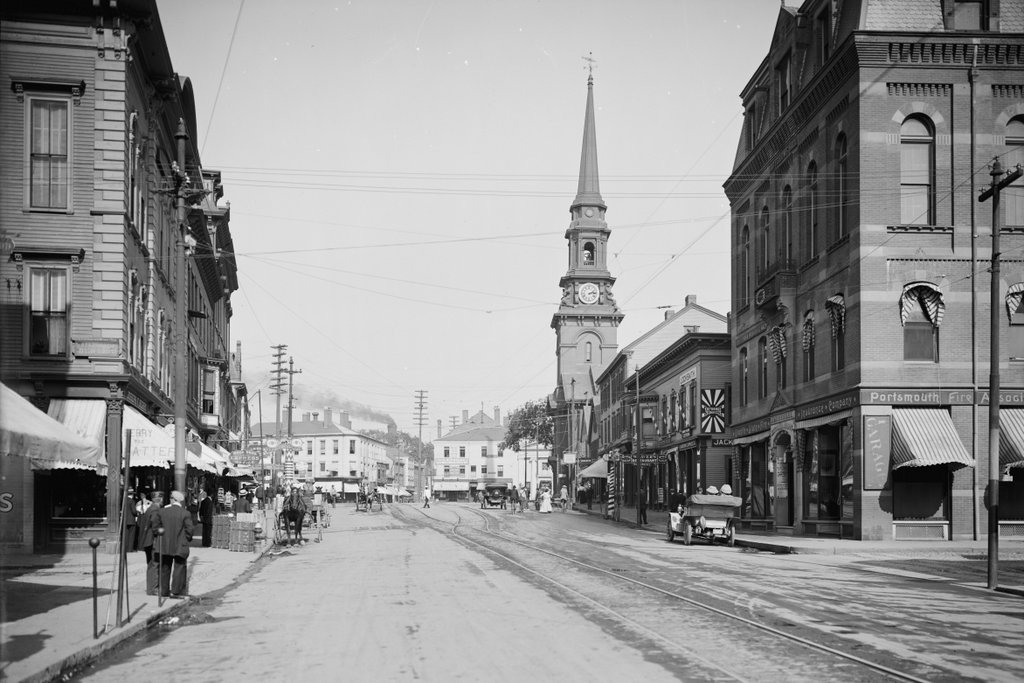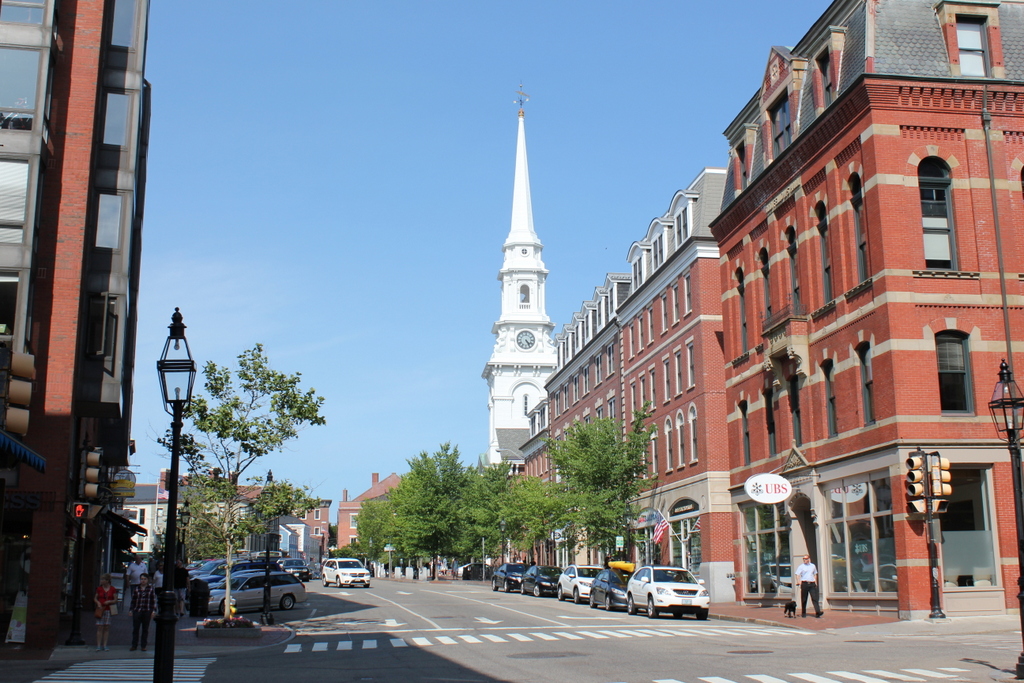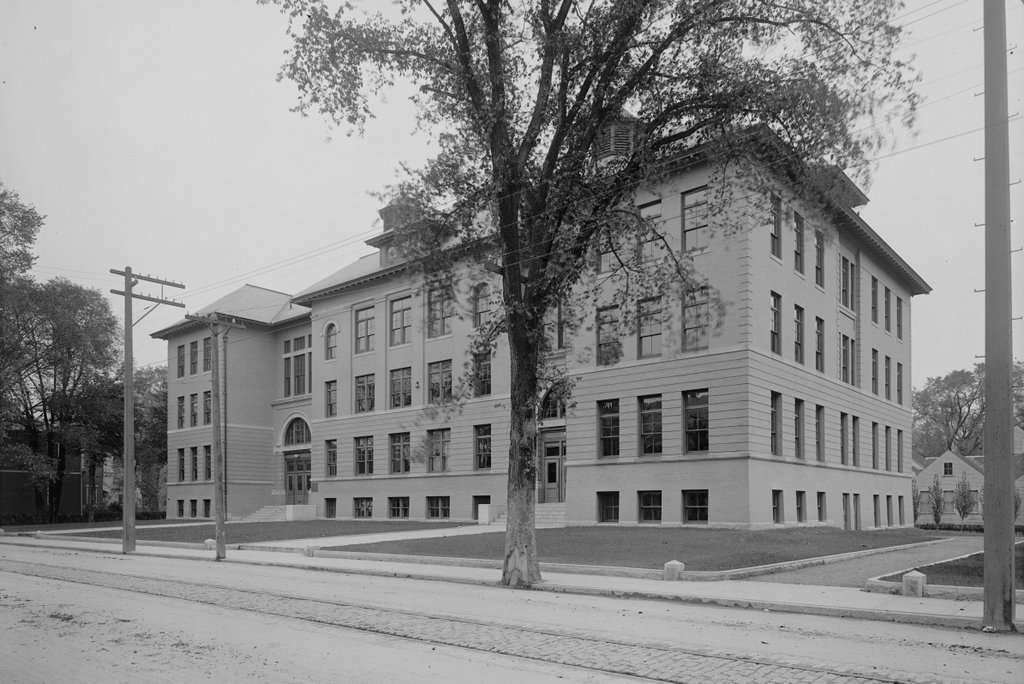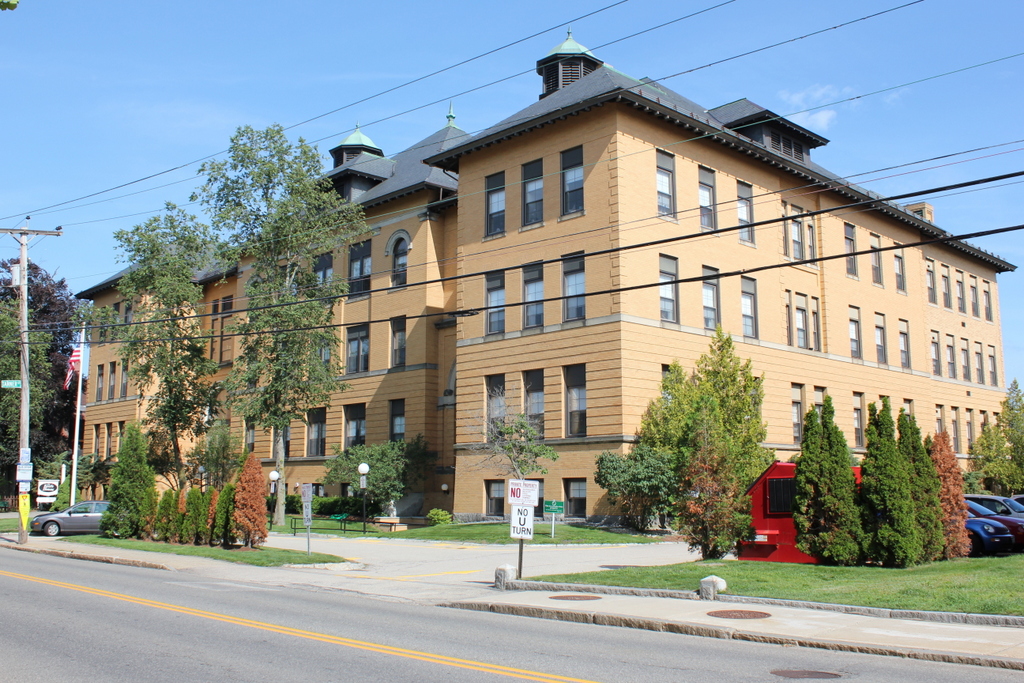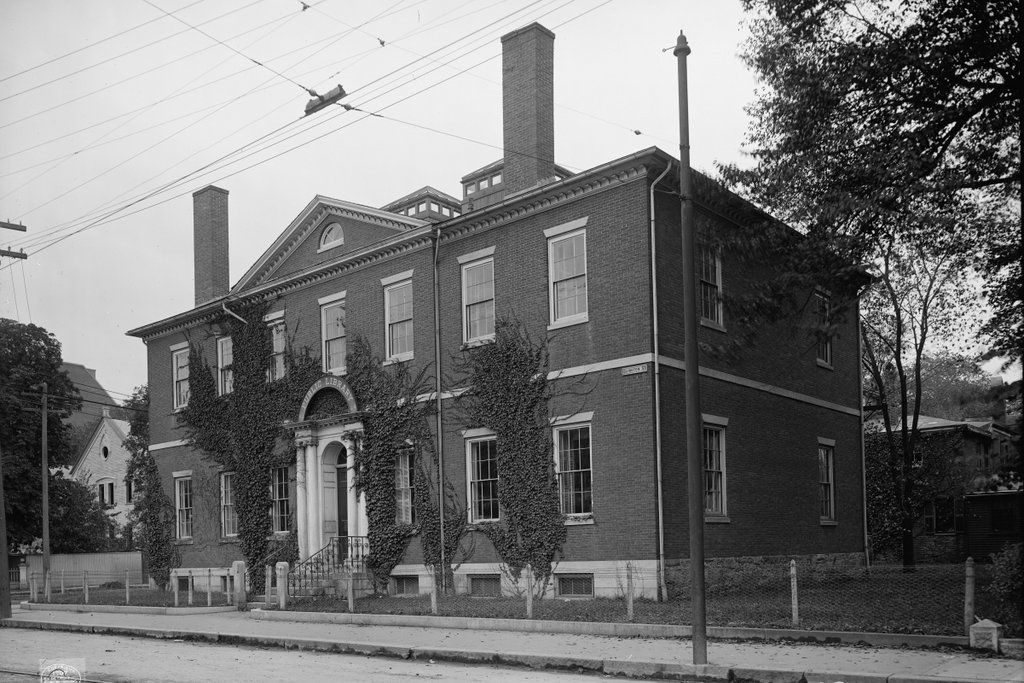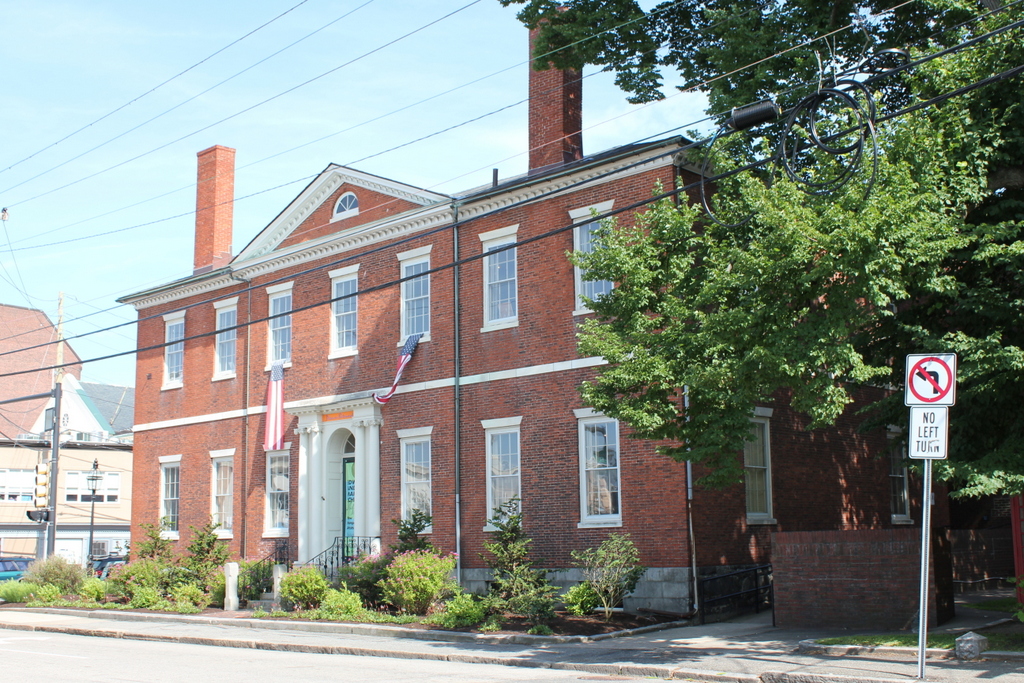The Copley Plaza Hotel in Boston, sometime between 1912 and 1920. Image courtesy of the Library of Congress, Detroit Publishing Company Collection.
The hotel in 2015:
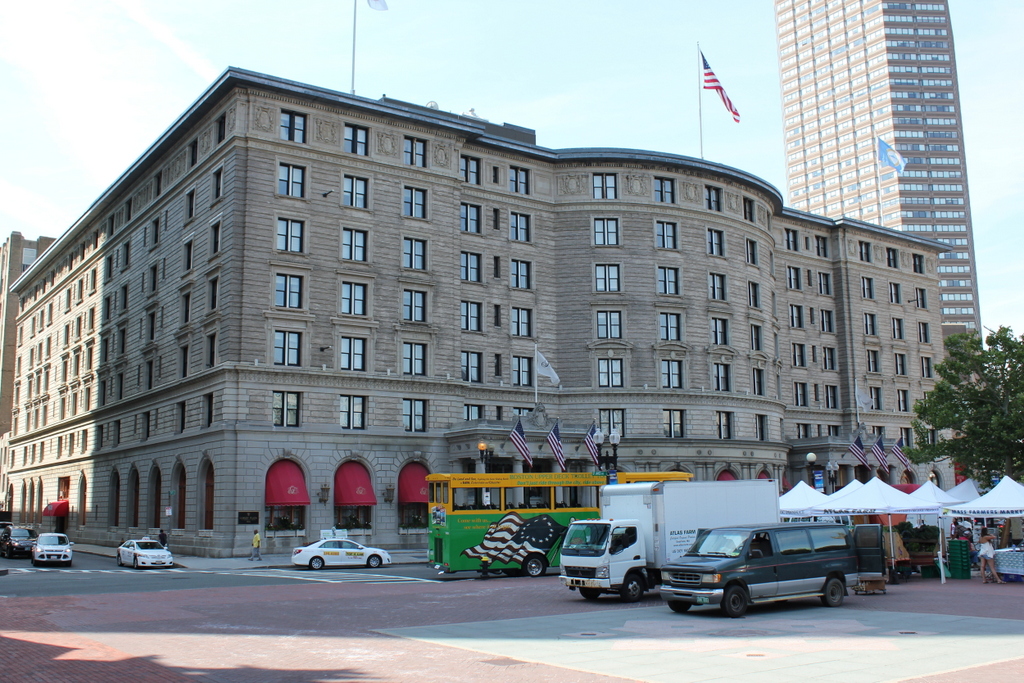
These photos were taken from about the same spot as the ones in the previous post, just facing to the left of Huntington Avenue. This view shows the Copley Plaza Hotel, which has had few exterior changes in the past century, and remains a prominent Boston hotel today. This site was once home to the Museum of Fine Arts, before they relocated to their present site further down Huntington Avenue. The hotel was completed in 1912, and since then has hosted a number of distinguished guests, including most U.S. presidents as well as many foreign dignitaries and heads of state.
Boston mayor John F. Fitzgerald presided over the opening ceremonies, five years before his grandson, John Fitzgerald Kennedy, was born. The hotel also has another, more tragic connection to the grandfather of a prominent national politician; in 1921, the grandfather of present Secretary of State John Kerry committed suicide in a bathroom here. Less than 20 years later, another notable suicide occurred here when Cincinnati Reds catcher Willard Hershberger became the only Major League Baseball player to commit suicide during the baseball season, on August 3, 1940. Normally the team’s backup catcher, he had to play full-time in the middle of a pennant race after the starting catcher was injured, but became distraught after blaming himself for several poor games, including a 4-3 loss to the Boston Bees the day before. The Red would ultimately go on to win the World Series that year, in part out of a desire to honor Hershberger’s memory.
By the mid-1900s, the hotel had begun to decline, and it was rebranded as the Sheraton Plaza hotel, complete with a tacky neon sign on the roof. For some time it was more of a budget hotel than the grand hotel that it had once been, but in 1972 it was purchased by John Hancock Mutual Life Insurance Company, the same company that was building the John Hancock Tower next door. They restored the historic building, and today it is operated by Fairmont Hotels and Resorts as the Fairmont Copley Plaza. More than a century after it opened, it is still one of the city’s premiere hotels, and probably its most recent notable visitor was President Obama, who gave a Labor Day speech here earlier this month.

